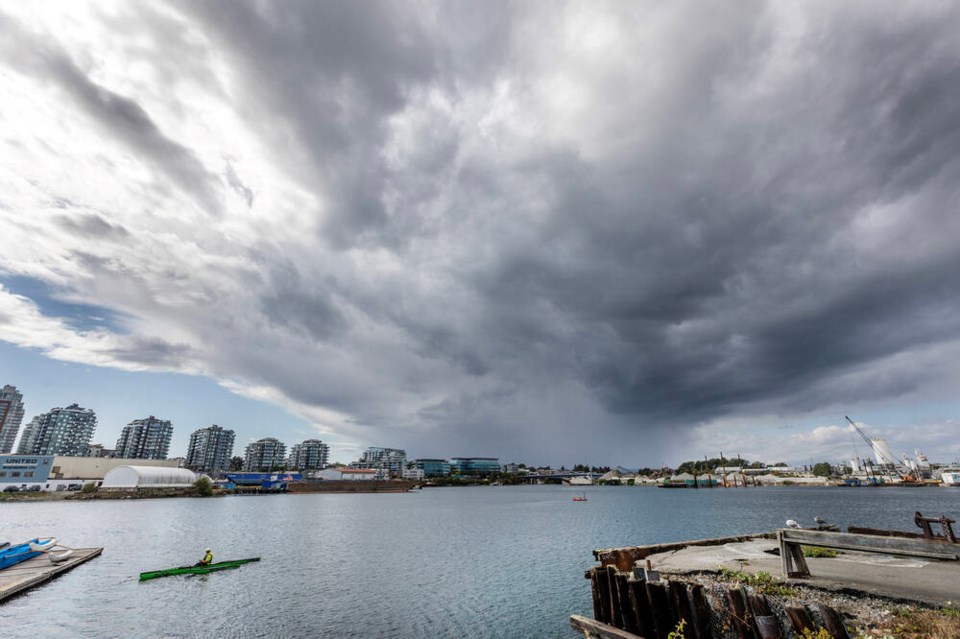A commentary. Shapiro is principal at environmental consultancy Shapiro & Company and Morris is director of B.C. Water Legacy and a steering member of the Watershed Security Coalition.
On Saturday, Oct. 19, as British Columbians voted, an atmospheric river smashed rainfall records on the South Coast. Streets turned into raging rivers, causing widespread destruction to homes, roads, and infrastructure, and at least three tragic deaths.
This wasn’t just another rainy day. Cities from Victoria to Hope saw their wettest October 20th in over half a century. Weekend rainfall totalled a jaw-dropping quarter metre or more in Coquitlam (256 millimetres) and Kennedy Lake (318 millimetres).
As homeowners and businesses deal with the aftermath, we must rethink watershed management in this province to protect communities against future water disasters.
Before 2021, few of us knew the term “atmospheric river.” This was the year when catastrophic flooding in the Fraser Valley caused more than $9 billion in damage. Now, the term is part of everyday language.
It likely comes as no surprise that our overheated climate is the culprit. Warm air holds more water vapour, leading to heavier rainfall while also increasing evaporation, which dries out the land. The same process causing wetter winters is also producing drier summers.
This shift in our water cycle has created a new cycle of extreme downpours and severe drought — one our human-built infrastructure was never designed to accommodate.
The problem our towns and cities now face is the misguided belief that we could ignore nature and pave over watersheds, rather than work with water the way nature intended.
Following the latest storm, Kai Chan, a professor at the University of British Columbia, pointed to the hundreds of rivers and streams that have been buried and routed through underground sewers and pipes over the past century.
These legacy development and land use decisions are putting many of our communities, roads and homes at risk.
Paving over a stream creates an urban landscape that is prone to flooding. Drain a wetland, and you reduce the ability of plants and soils to hold onto water in times of drought.
Instead of paving over and burying these natural waterways, a growing body of projects across B.C. seeks to work with the natural water cycle rather than control or suppress it.
The City of Vancouver, for example, has set a goal to capture and treat 90% of its rainfall through natural infrastructure.
Green roofs, permeable pavement, and rain gardens mimic natural water processes by absorbing and filtering rainwater like a sponge before returning it to waterways. These methods will keep water off streets and out of homes, and make the city more livable.
In the Fraser Valley, Katzie First Nation is leading a multi-year initiative in the upper Pitt River watershed, partnered with World Wildlife Fund Canada. Since 2019, their efforts have successfully restored river flows and salmon habitat by removing in-stream barriers, stabilizing slopes, and raising banks to prevent future flooding.
Montreal is constructing more than 30 “sponge parks.” These spaces are designed to let rainwater filter into the soil, providing a buffer against flooding and drought, and cooling during heat waves. In China, “sponge city” plans are being developed at an even larger regional scale.
The solutions we need are at our fingertips. These solutions are simple and cost-effective, especially compared to the enormous costs of water disasters. But right now, B.C. lacks the investment to implement them at scale.
Water experts estimate that $75-100 million annually is needed to protect and restore B.C.’s watersheds. From 2021 to 2022, the provincial government invested $57 million in watershed projects, delivering outsized returns, from restored wetlands protecting homes during floods, to improved food security and fish habitat during drought.
In 2023, the provincial government created a new B.C. Watershed Security Fund, a permanent fund in partnership with First Nations.
This new endowment fund offers an exciting opportunity to support local governments, First Nations and stewardship groups in implementing solutions that will safeguard communities from future water disasters.
However, this fund provides only $5 million annually for watershed initiatives, a marked decrease from previous years’ funding and far from what’s needed. By rapidly scaling this investment, the government can take a major step toward ensuring the security and safety of communities across the province.
Atmospheric rivers may be here to stay, but how we collectively respond is in our hands.



